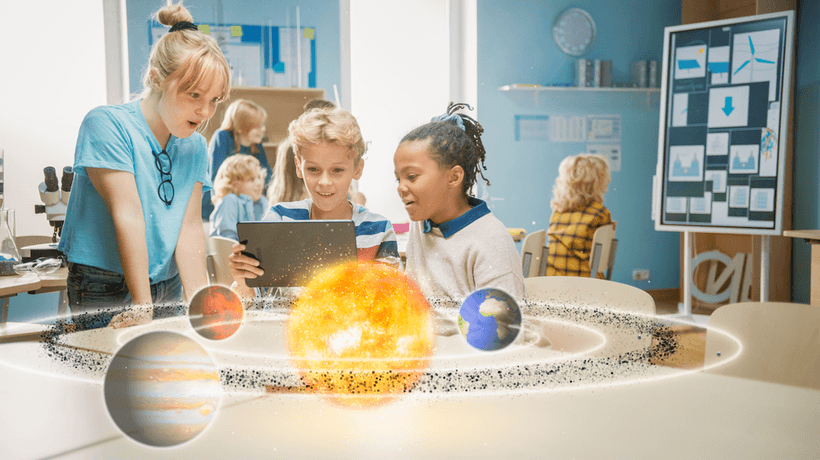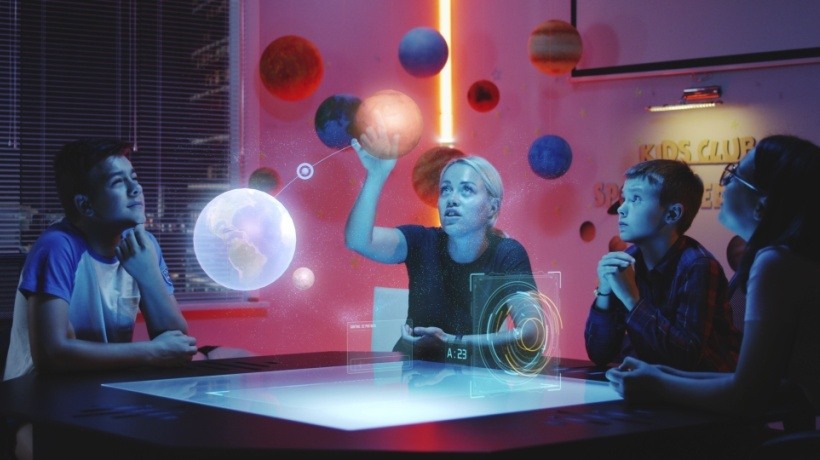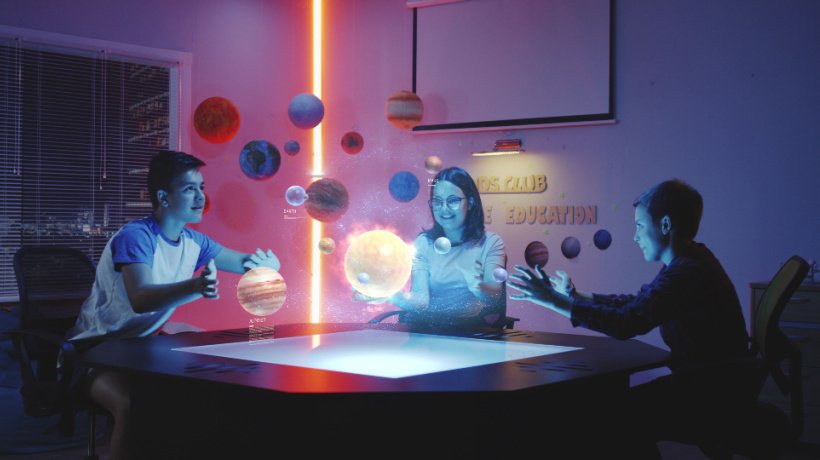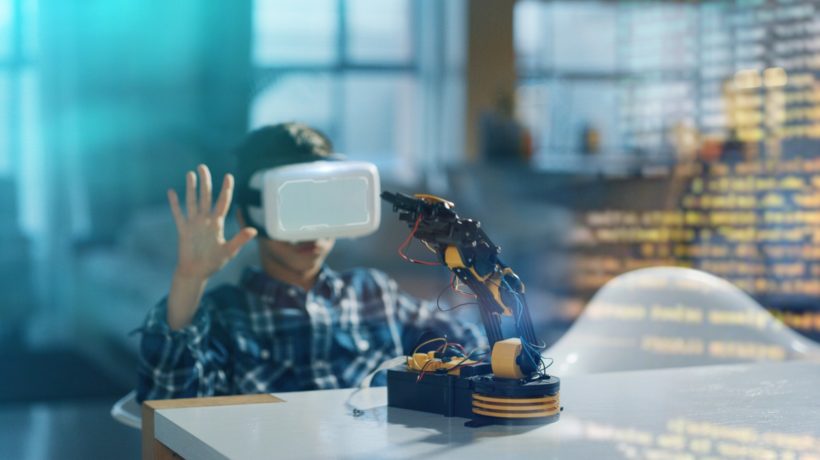Role Of AR In Education
Incorporating Augmented Reality (AR) into education will change the way students engage with learning materials, and educators engage with students to teach. AR combines the characteristics of the real world with a rich digital environment; venturing into educational AR exposes a textbook, classroom, or laboratory to the human experience, causing abstract insights to emerge from richness and vibrancy of life. Perhaps you illustrate a 3D molecule as a lesson in chemistry, and the student can view the chemical properties in 3D, or use the AR to travel back in time and engage with elements of the lives of ancient civilizations in an experience realized through AR. AR in education can offer new ways of engagement and access to learning in ways previously inconceivable.
What Is The Role Of AR In Education?
Augmented Reality in education means layering digital content, such as images, video, and 3D models, over an experience in the real world. The primary difference in the experience of AR is the enhancement of a real-world experience with digital components users can see through the lens of a smartphone, tablet, or using AR glasses. A functional example of an AR experience is an app that enables a scale model of the human heart in 3D to be projected. The student can view the image on their desk; rotate it, or zoom into it, and be engaged on a level that is simply not comparable to 2D images presented in textbooks.
The Advantages Of Augmented Reality In Improving Learning Outcomes
Augmented Reality is not a gimmick; it can be shown to have positive impacts on effective learning outcomes. The different advantages of using AR in learning are:
1. Increased Engagement And Improved Memory Retention
AR has the potential to increase engagement and excitement around learning through interactive experiences from static content. Research shows that students retain and learn better when they actively participate in learning. For instance, AR-based apps allow students to explore virtual planets, monuments of historical significance, or workings of biological systems, which increases curiosity and strengthens long-term memory retention.
2. Making Abstract And Difficult Content More Accessible
Mathematics, physics, and biology often contain abstract content, difficult to envision and/or conceptualize. AR provides an easy way to visualize concepts in 3D, making the difficult and/or abstract more comprehensible. In physics for example AR can show forces and vectors as objects are moving; in biology students can see cellular processes happening in real time.
3. Promoting Experiential Learning
AR promotes hands-on learning; students learn by doing. In STEM education for example AR labs allow students to conduct experiments in a safe, controlled, digital environment. This can reduce the cost of physical lab equipment, and also allows for unlimited testing with no safety risks.
4. Connecting Theory And Practice
AR supports connecting theory to practice. For example, architecture students can see building models in their real environment before construction occurs or medical students can practice procedures on AR-generated patients which enhances their confidence and competence with practice.
5. Diversity And Accessibility
AR learning tools can support diverse learning needs. Audio-supportive AR content would provide a way to make the learning process more inclusive for visually impaired students. Additionally, gamified AR platforms can assist students to complete a lesson with more visual engagement and less text-based requirements.
Use Cases Of AR In Education
AR technology is being used in education at levels ranging from primary school to university education and professional development. Noteworthy applications include:
1. AR Textbooks
Publishers are adding AR codes to textbooks that, when scanned, present a 3D animation or a video about the topic. For example, a student can scan an image of a volcanic eruption, and a 3D eruption animation can assist students in visualizing geological processes.
2. Virtual Field Trips
AR virtual field trips create the experience of "travelling" anywhere without actually leaving the classroom. Students can visit the Great Wall of China, walk on the surface of Mars, or visit ancient ruins, providing the opportunity to engage in geography or history lessons with another level of immersion.
3. Skill Development And Vocational Training
AR is gaining traction in professional and technical training. Mechanics, engineers, and healthcare practitioners use AR simulations for hands-on experience. For example, a medical AR simulator can aid nurses during patient vein sighting, significantly improving accuracy and comfort.
4. Language Learning
Language applications can use interactive 3D characters and real-life scenarios to teach vocabulary and pronunciation. Learners can engage with the 3D character teacher or see the words used in their real environment, helping to develop contextual understanding.
Challenges In Implementing The Role Of AR In Education
AR holds great promise but presents various hurdles:
- High development costs
Developing AR content requires specialized skills and a technology cost. - Device compatibility
Many schools can't afford AR-compatible devices or infrastructure. - Lack of teacher training
Educators need proper training to embed AR in their teaching. - Content availability
There is often a limited amount of AR subject-specific educational content offered at higher levels.
By working together, technology companies, educators, and government agencies can help overcome these challenges to create AR-based learning experiences that are equitable to all.
The Future Of AR In Education
The outlook for Augmented Reality in education is extremely bright. As technology becomes cheaper, we can anticipate the following possibilities:
- Personalized AR learning experiences based on each individual student's pace and learning style.
- AI-based adaptive AR technologies that profile the understanding of students in real time.
- More AR classrooms with more collaborative and interactive conditions.
- An opportunity to tie into the emerging Metaverse, which would create an infinity of students learning, interacting, and creating in immersive technology educational experiences.
We are suggesting that Augmented Reality in education is not only enhancing learning but changing how we experience knowledge. It is stimulating curiosity, increasing engagement, and preparing students for a future where education and technology are seamlessly happening together.
Final Thoughts
The increasing role of AR in education signals a change towards experiential and inclusive learning. By giving students the ability to explore abstract learning content as if it is "real" and being an active participant in the learning process, AR is dismantling the long-held barriers to education as we know it and helping to evolve the notions of learning altogether. If schools, universities, and EdTech follow up and innovate further, AR can become a powerful, natural addition to the classrooms of tomorrow, where learning will extend beyond the pages of a textbook and leap into the imagination of students.









